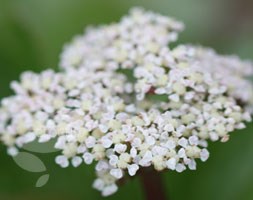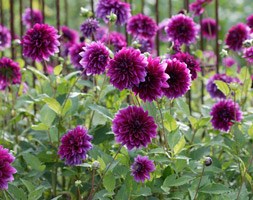New products at Crocus
by Sarah - October 7th, 2013.Filed under: Crocus, New Products.
New lines added today at Crocus
Ligusticum scoticum (Scotch lovage) £9.99
Position: full sun or lighlty dappled shade Soil: fertile, moist, well-drained soil Rate of growth: fast-growing Flowering period: July to August Hardiness: fully hardy Christopher Bradley-Hole used this to great effect in his 2013 garden at the Chelsea Flower Show. It is a hardy perennial, with attractively divided foliage, from which dark-stained stems arise bearing pretty umbels of pink-tinged, white flowers in midsummer. These are particularly attractive to pollinating insects. Allow it drift through naturalised planting schemes, prairies and woodland edges. Garden care: The plant’s tendency to self-seed may be a problem in hot summers. If fennel is being grown exclusively for its foliage, remove the yellow flowerheads to prevent it from self-seeding. When flowers have finished them cut back to 30cm from the ground.
Dahlia ‘Thomas A. Edison’ (dahlia) £4.99
Position: full sun Soil: fertile, humus-rich soil Rate of growth: average Flowering period: July to September Hardiness: half hardy (will need winter protection) We wanted this decorative dahlia in our collection as its flower colour is so easy to mix with a wide range of other shades. The many-petalled, medium-sized blooms are crammed with magenta pink petals, which tend to be a touch paler towards theit outer edges. They are also excellent for cutting, which will encourage more to form. Garden care: Dahlia tubers can be planted outside after frost, or started off in pots under glass in late winter to early spring. Plant them horizontally approximately 12cm deep, making sure the ‘eyes’ are uppermost. Allow enough room between each tuber so the plants can grow and spread to their full size without being over-crowded. While in growth, provide a high-nitrogen liquid feed each week in June, then a high-potash fertiliser each week from July to September. Stake with canes or brushwood if it becomes necessary. In mild areas, leave them in situ over winter, but protect the crown with a generous layer of dry mulch. In colder areas, carefully lift and clean the tubers once the first frosts have blackened the foliage and allow them to dry naturally indoors. Then place the dry tubers in a shallow tray, just covered with slightly moist potting compost, sand or vermiculite and store in a frost-free place until planting out again.








